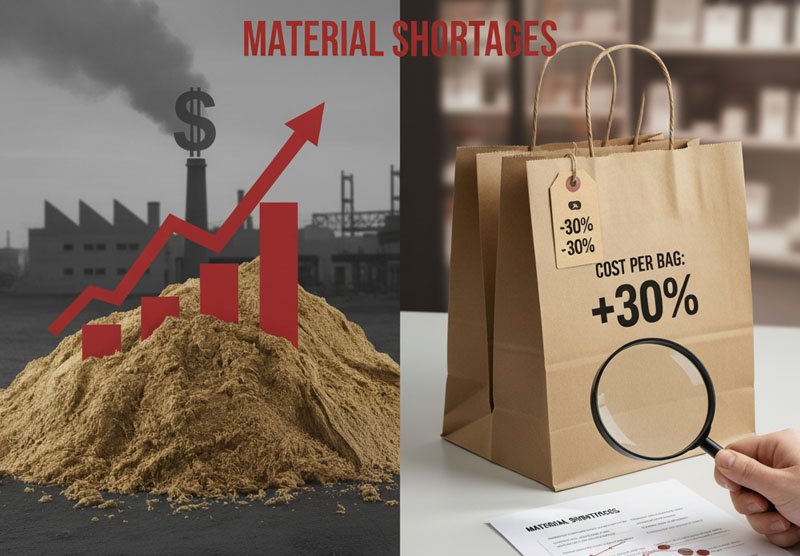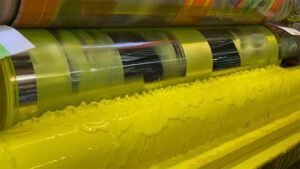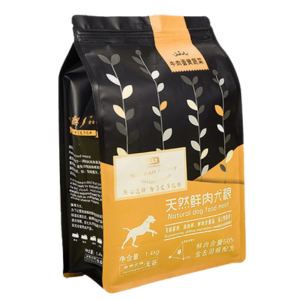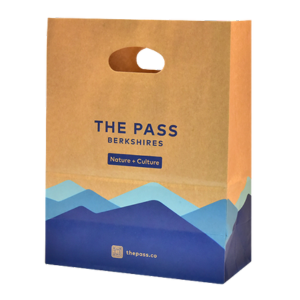The world of packaging looks simple from the outside—just bags and boxes, right? Wrong. Behind every paper bag is a complex supply chain that feels like a house of cards. And when one card—like raw material supply—falls, the costs can skyrocket.
Material shortages directly drive up paper bag costs by raising raw pulp prices, increasing energy expenditures, and slowing production efficiency. For businesses like ours, this means balancing quality with cost control. Buyers must understand how these shortages ripple through the supply chain and prepare smart purchasing strategies.
Sounds intense? It is. Let’s break it down, so you see how this affects your business and what you can do about it.
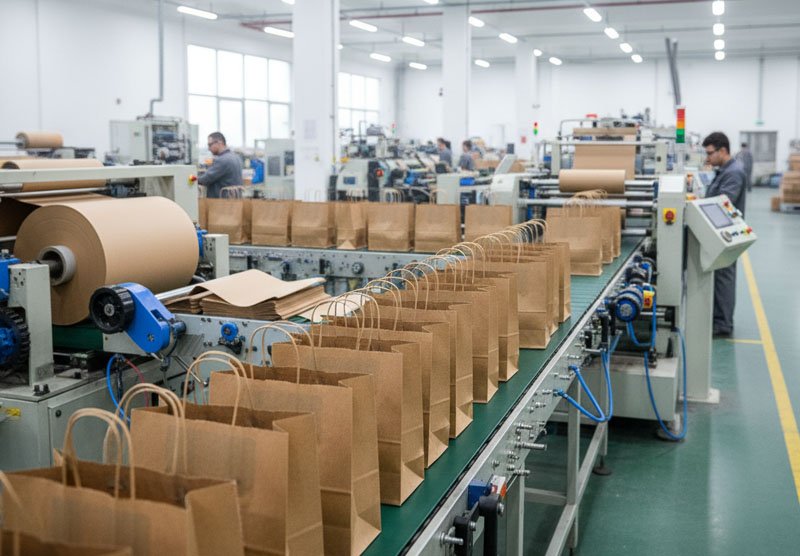
What Causes Material Shortages in Paper Packaging?
First, the basics. The main ingredient of a paper bag is kraft paper, made from wood pulp. When forests are over-harvested, or when demand outpaces supply, shortages occur.
Throw in global events—pandemic disruptions, shipping container shortages, or political trade restrictions—and the supply tightens even more. According to recent data, the price of wood pulp has doubled in some markets since 2021.
And it’s not just pulp. Chemicals used in paper treatment, inks, and adhesives also face shortages. Each missing ingredient pushes costs higher.
How Shortages Affect Paper Bag Costs?
Let’s be blunt: when kraft paper costs more, your bag costs more. Simple as that.
In 2022, kraft paper prices jumped by over 30%. For a factory like ours producing 5 million bags daily, even a 5% increase in raw material costs creates a huge ripple.
Transportation adds another headache. With shipping delays and fuel price increases, even getting materials into China or exporting finished bags out becomes a cost rollercoaster.
And don’t forget labor. When shortages hit, production slows. Idle machines and overtime pay raise costs too.
Why Do Buyers Feel the Pinch More Than Manufacturers?
Here’s the irony. We, the manufacturers, absorb the first shock. But eventually, that wave travels down the supply chain to you, the buyer.
Your food packaging, retail bags, or e-commerce courier bags all rely on consistent supply. If kraft prices stay high, you’ll see higher quotations and tighter delivery schedules.
Some buyers try to switch suppliers mid-crisis. Bad idea. That often leads to certificate fraud or low-quality substitutions. Trust me—I’ve seen brands burned by this many times.
Can Innovation Help Control Costs?
Yes, but it’s not a magic wand.
At GreenWing, we invest in recycling technology, lightweight designs, and alternative fibers like bamboo and sugarcane pulp. These help reduce dependence on traditional wood pulp.
For example, bamboo pulp availability is more stable in Asia. Using blends, we cut raw material sensitivity by around 12%.
Also, advanced printing technology means we use less ink without compromising quality. Over millions of bags, small tweaks save huge money.

How Should Buyers Respond to Material Shortages?
My advice? Don’t panic. Plan.
- Lock contracts early – When you foresee shortages, secure your annual supply in advance.
- Diversify materials – Be open to bamboo, sugarcane, or recycled blends.
- Verify certifications – Avoid cheap, uncertified paper that can hurt your brand image.
- Talk to your supplier – Don’t just chase the lowest quote. Build trust.
Remember, we’re in this together. The more visibility you give us into your demand, the better we can plan and stabilize your costs.
What’s the Outlook for the Paper Bag Industry?
Experts predict that pulp demand will outpace supply through 2026. That means volatility isn’t going away soon.
But there’s good news. Governments are pushing eco-packaging laws worldwide. While this raises short-term demand and pressure, it also means long-term growth and investment in alternative raw materials.
So yes, costs may rise. But smart planning and partnerships will keep your brand ahead of the curve.
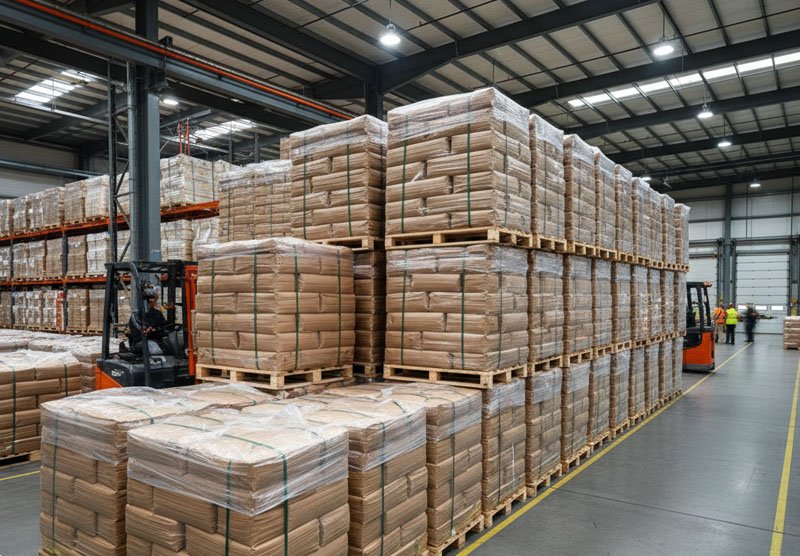
Conclusion
Material shortages aren’t just a manufacturer’s headache—they directly impact your bottom line. By understanding the causes, anticipating cost swings, and choosing trusted partners, you can protect your brand and budget.

